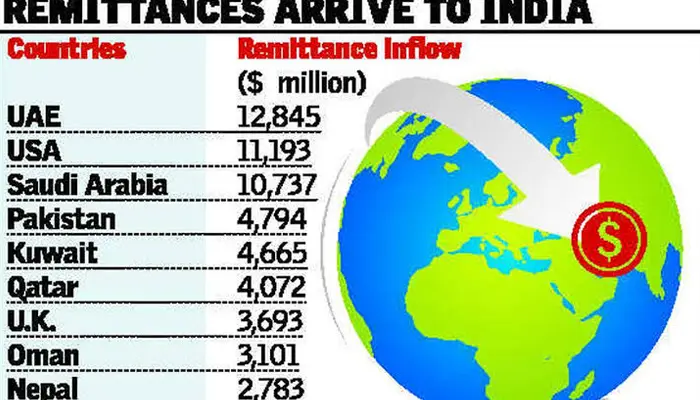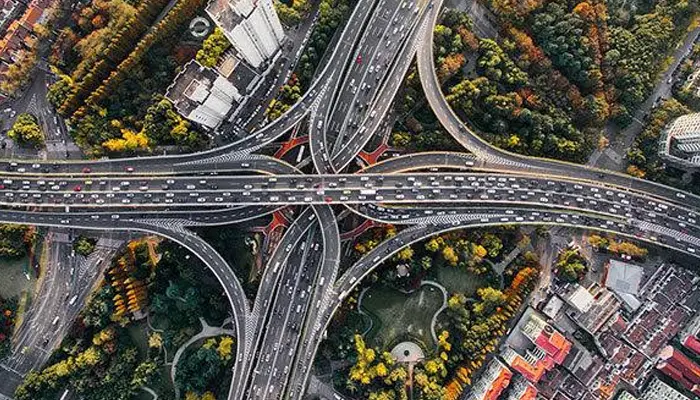India's $111 Billion Boon: Unveiling the Broader Socioeconomic Impact of Remittances on Development
- Admin
- 1 year ago
- 4 minutes read

India stands out as the primary source of international migrants, boasting an impressive count of nearly 18 million individuals. Notably, substantial Indian diasporas have been established in countries such as the UAE, US, and Saudi Arabia. Moreover, India retains its prominence as the top recipient of remittances from its diaspora, surpassing the notable milestone of $110 billion in 2022.
In a remarkable achievement, India received a staggering $111 billion in remittances, solidifying its position as the leading recipient. This marked a substantial increase from the $83 billion received in 2020, underscoring the significant growth in financial inflows to the country.

In the global landscape of economic migration, remittances play a pivotal role in shaping the socioeconomic trajectory of nations, particularly in developing countries like India. These financial inflows, sent by Indian migrants working abroad to their families back home, have far-reaching implications for India's development journey. This article delves into the broader socioeconomic impact of remittances on India's progress, highlighting their role in poverty reduction, infrastructure development, and investment in education and healthcare.
Poverty Alleviation: A Lifeline for Millions
Remittances serve as a lifeline for millions of Indian families living below the poverty line, providing them with a crucial source of income that sustains their basic needs and improves their standard of living. For households in rural areas, where opportunities for employment and economic growth are limited, remittances represent a vital safety net that helps alleviate financial hardships and ensures food security. Studies have shown that remittance-receiving households are more likely to invest in productive assets, such as agricultural inputs or small businesses, thereby contributing to poverty reduction and economic empowerment at the grassroots level.
Infrastructure Development: Bridging the Divide
The infusion of remittance funds into local economies fuels infrastructure development projects across India, bridging the urban-rural divide and catalyzing regional growth. From the construction of roads and bridges to the expansion of electricity and sanitation facilities, remittances contribute to the enhancement of physical infrastructure, thereby facilitating greater connectivity, accessibility, and mobility for communities in remote areas. This infrastructure development not only improves the quality of life for residents but also creates employment opportunities and stimulates economic activity, driving sustainable development in both urban and rural regions.
Investment in Education: Empowering the Next Generation
One of the most significant impacts of remittances on India's development is their role in promoting education and human capital formation. With increased financial resources at their disposal, families are better able to afford school fees, books, and other educational expenses, thereby enabling children to access quality education and pursue higher learning opportunities. This investment in human capital not only empowers individuals to break the cycle of poverty but also contributes to the overall development of society by fostering a skilled workforce, promoting innovation, and driving economic growth in key sectors such as technology, healthcare, and research.
Enhancing Healthcare Access: Improving Public Health Outcomes
Remittances play a vital role in improving healthcare access and outcomes for communities across India, particularly in underserved rural areas where healthcare infrastructure is often inadequate. Families receiving remittance funds are better able to afford essential healthcare services, including medical treatment, preventive care, and access to medications, thereby reducing the incidence of preventable diseases and improving overall health outcomes. Additionally, remittances contribute to the funding of healthcare facilities, equipment upgrades, and medical research initiatives, enhancing the capacity of the healthcare system to meet the evolving needs of the population and address emerging health challenges effectively.
The socioeconomic impact of remittances on India's development cannot be overstated. These financial inflows serve as a catalyst for poverty reduction, infrastructure development, and investment in education and healthcare, laying the foundation for sustainable and inclusive growth. As India continues on its development journey, harnessing the potential of remittances to empower individuals, strengthen communities, and build a brighter future for all remains paramount. By leveraging the transformative power of remittances, India can accelerate progress towards achieving its socioeconomic development goals and realizing its full potential as a global economic powerhouse.
















